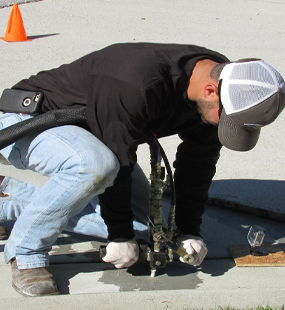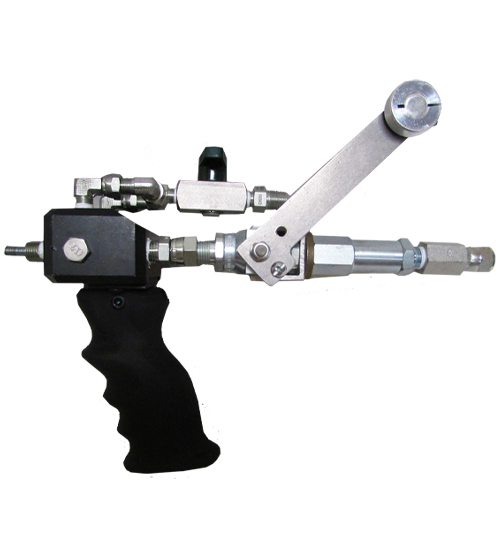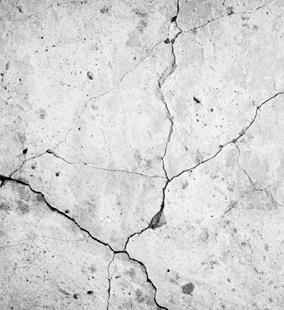
- Home
-
Solutions
-
Leak Seal
Seal leaks in concrete or masonry with crack injection and curtain grouting of our Prime Flex polyurethanes and AR acrylate resins. Prime Resins offers superior solutions for stopping leaks in every type of environment.
Read More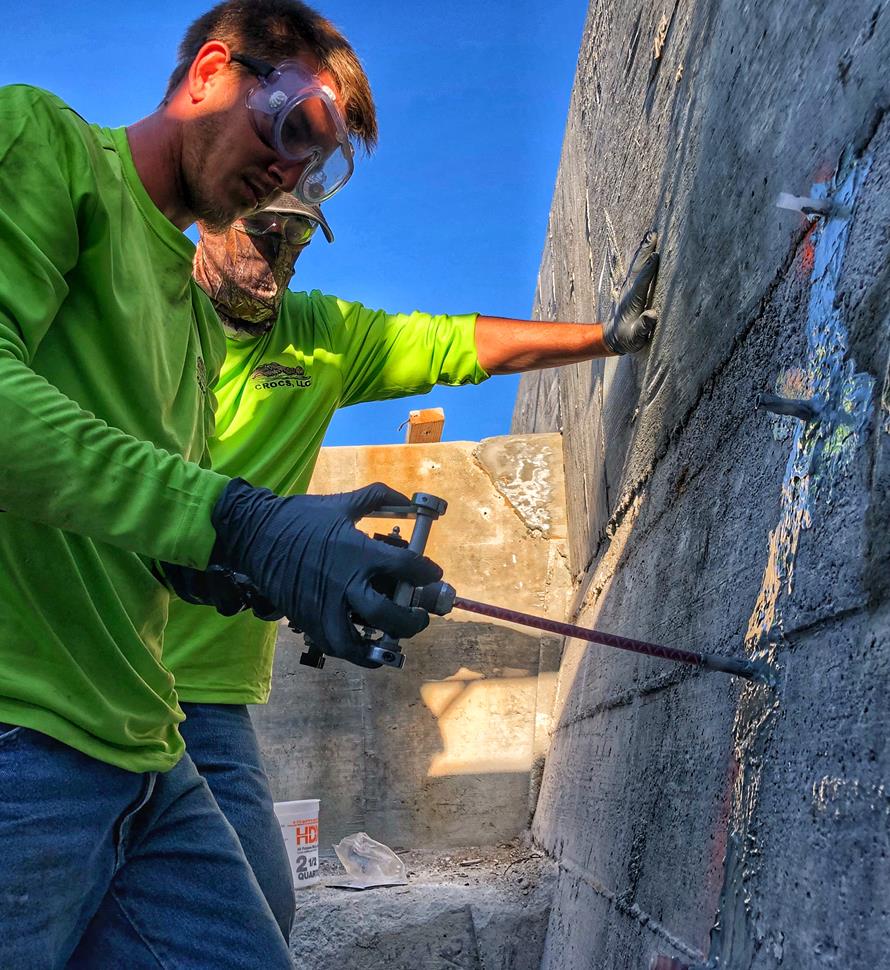
-
Soil Stabilization
Sound concrete relies on a sound substrate. Stabilize soils and fill voids with our polyurethane and acrylate foams and gels. We make chemical grouts for permeation and compaction grouting in wet and dry conditions.
Read More
-
Slab Lifting & Stabilization
Slab lifting and slab stabilization with polyurethane foams offers many advantages over traditional mudjacking. Only Precision Lift is engineered to tackle underlying issues and slab lifting with precise, dependable results.
Read More
-
Floor Repair & Joint Protection
Spalled concrete is concrete that is chipped, cracked and deteriorating. This often happens at a joint.
Read More
-
Seawall Repair
You can repair a seawall or bulkhead with Prime Resins chemical grouts: fill voids, stabilize loose soil and seal leaks at a fraction of the cost of wall replacement.
Read More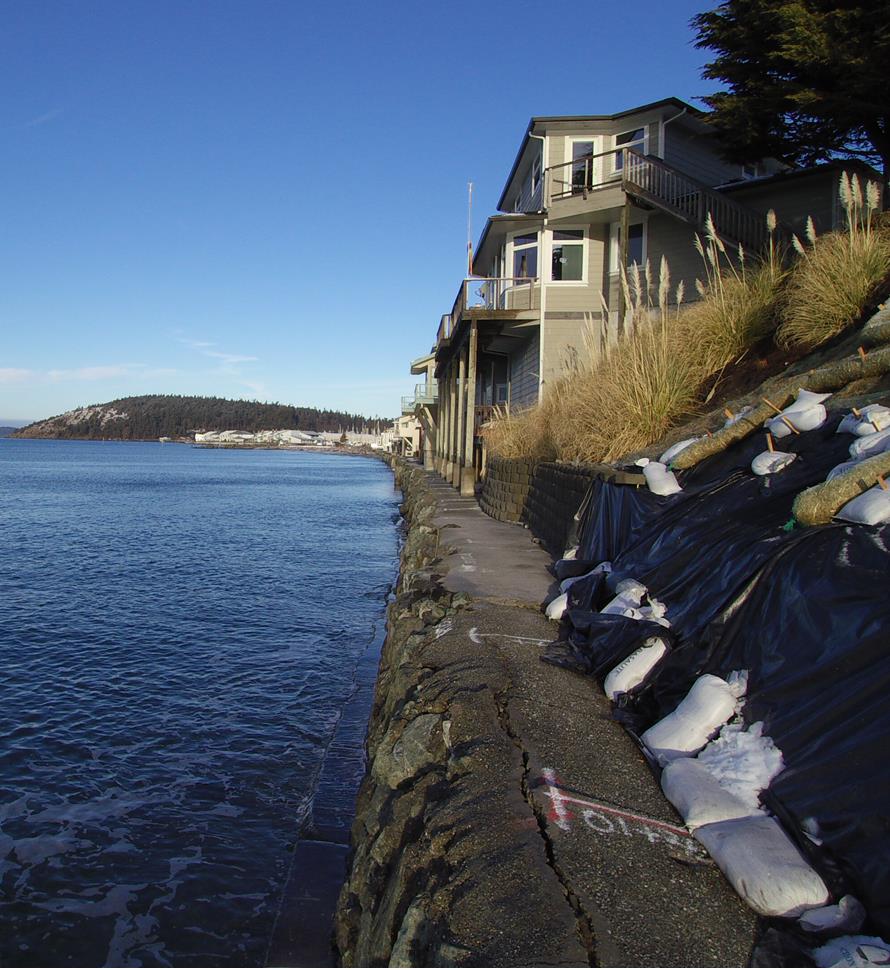
-
Structural Repair / Bonding & Anchoring
The need for crack repair in concrete structures can be caused by many different factors. Damage can occur to the concrete in situations where direct impact puts stress on one area of the structure.
Read More
-
Highway & Bridge
The geotechnical needs of DOTs and other agencies responsible for roads and bridges are vast. Issues include: Culvert repair Soil stabilization Void filling Concrete slab lifting Sinkhole remediation Slope control Slough control in tunneling
Read More
-
Waterproofing & Secondary Containment
Protecting concrete usually means shielding it from the elements of nature or from harsh manmade chemicals. But it’s not just concrete that needs such protection. Corrugated metal pipe, steel surfaces, material hoppers, rail cars and masonry all can come in contact with corrosive or abrasive materials or harsh conditions.
Read More
-
Leak Seal
-
Products
-
Leak Repair
- AR 800
- Conduit Seal Kit
- PR10L ACLM
- Soakum Oakum Kit
- Prime Flex 900 XLV
- Prime Flex 910
- Prime Flex 920
- Prime Flex 940
- Prime Flex 985 LX10
- Prime Flex 985 LX20
- Prime Flex 985 5.0
- Prime Flex 985 5.0 Fast
- Prime Flex Hydro Gel™ SX
- Prime Plug 1, 2 & 3
- PrimeCem MSM
- PrimeCem CAM
- PR10 ACLM (granular)
- Prime Flex Hydro Gel™ EXP
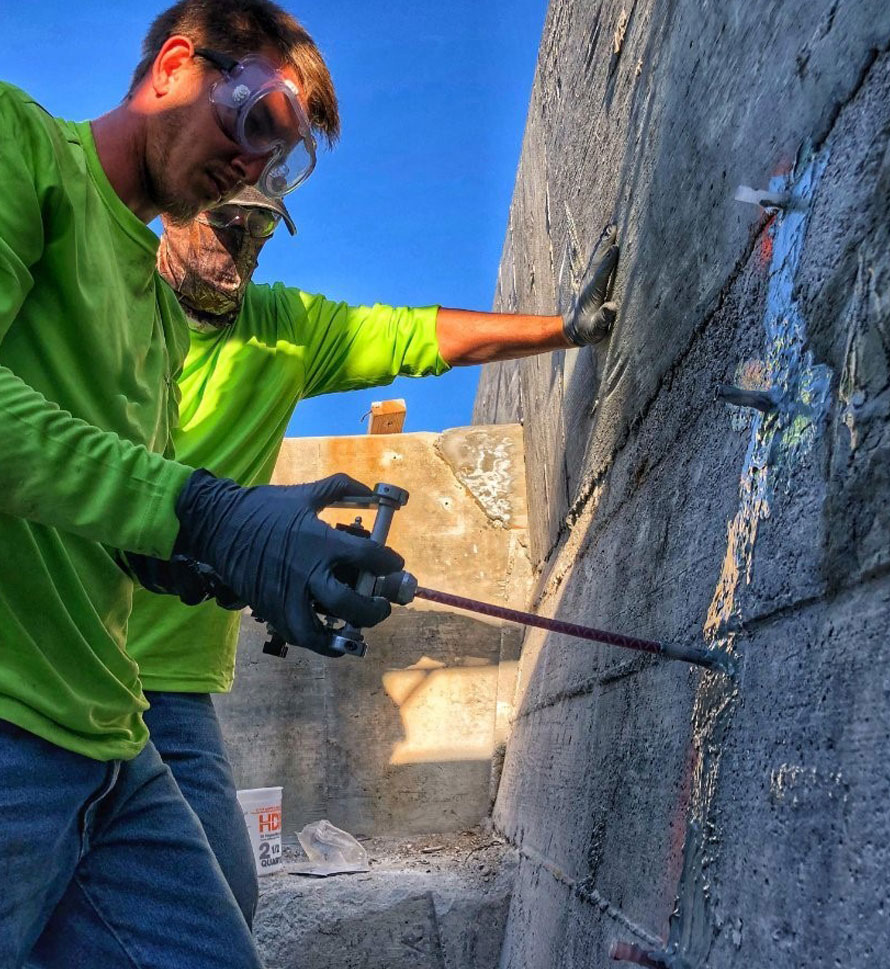
-
Soil Improvement
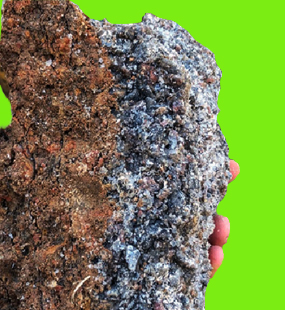
- Soil Stabilization
- Slab Lifting
- Structural Repair / Bonding & Anchoring
- Pumps
- Dispense Guns & Applicators
-
Turnkey Trailer Rig
Are you ready to hit the ground running doing concrete leveling with polyurethane foam? Prime Resins offers the industry’s best suite of products for lifting concrete as a turnkey, fully equipped trailer rig.
Read More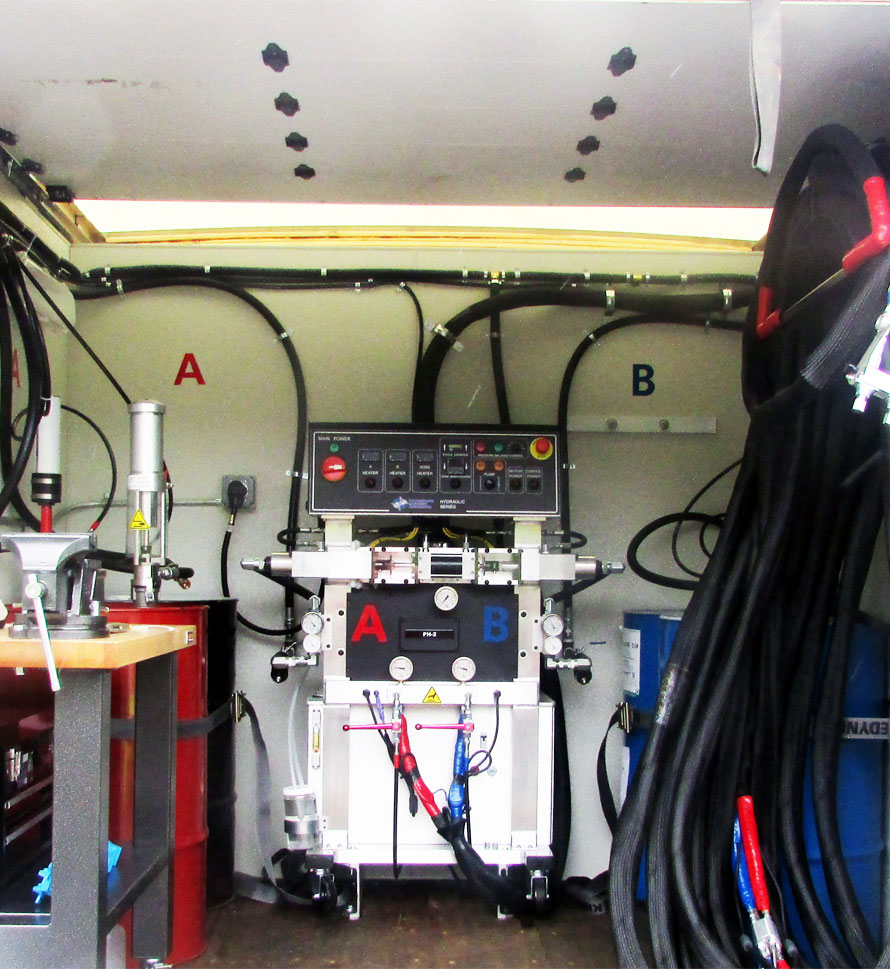
-
Accessories (General)
- 3/4" expendable drive point
- 3/8" and 3/4" soil probes
- Cartridge / Port Connectors and Mixers
- Conduit Seal Kit
- Eco Flush
- F Valve
- Flush Wand
- Grout Needle Kit
- High Pressure Control Valve
- High Pressure Mechanical Ports
- Kick Fast
- Low Pressure Plastic Ports
- PR11 TEA (used w/ PR10 ACLM)
- PR12 APSF catalyst (used w/ PR10 ACLM)
- PR17 LYTX
- Prime Kat
- Prime Plug
- Prime Solvent CGC
- Oakum
- Soil pipe jack
- Stainless Steel Grout Needle & Kit
- StainShield
- Wall Stinger Nozzle
-
Soil Grouting Accessories
- Pipe Coupler
- Pipe Coupler Ferrule
- Buttonhead Coupler - Straight
- Buttonhead Fittings
- SG 3/4" Expendable Drive Tip
- SG 3/4 Rod - 39" Base
- SG 3/4 Rod - 39" Connector
- SG 3/4 Rod - 19.5" Base
- SG 3/4 Rod - 19.5" Connector
- SG 3/4 Fitting - Pipe to Buttonhead
- SG 3/4 Fitting - Buttonhead Fitting
- IL 1/2" Drive Point
- IL 1/2" rod - 39" base
- IL 1/2" rod - 39" connector
- IL 1/2" Fitting Buttonhead
- SG 3/4" Fitting - Buttonhead Coupler
- SG 3/4" Slotted Drive Tip
- SG 3/4 Drive Head
- Modified Pipe Jack Soil Grouting
- SG 3/4 Fitting - Buttonhead Coupler
- Pagani DPM30 Penetrometer
- IL 1/2" Fitting - Buttonhead to Connector Rod
- IL 1/2" Rod to Rod Coupler Fitting
- High Pressure Flow Control Valve
- Buttonhead Coupler - 90°
- Buttonhead Clamp Kit
- DPM30 Penetrometers
- JackJaw Soil Probe Extractor
- Floor & Joint Repair
- Waterproofing & Secondary Containment
-
Leak Repair
- News
- Downloads
-
Tools
-
Case Studies
Prime Resins takes pride in its ability to find the right solutions to the problems facing our customers. Here are some examples of customers’ successful jobs:
Read More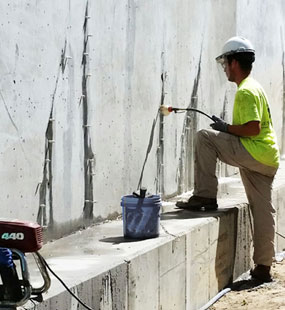
-
Prime Practices
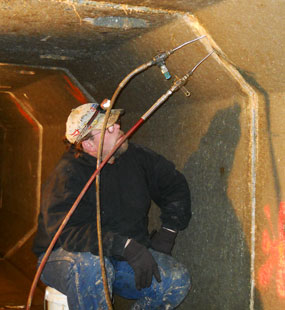
-
Videos

-
Estimating Tools & Info.

-
Why us?
The superior quality of products at a fair price, our consultative approach, and our unparalleled technical support set Prime Resins apart. Learn more about the Prime difference.
Read More
-
Product Types & Typical Uses
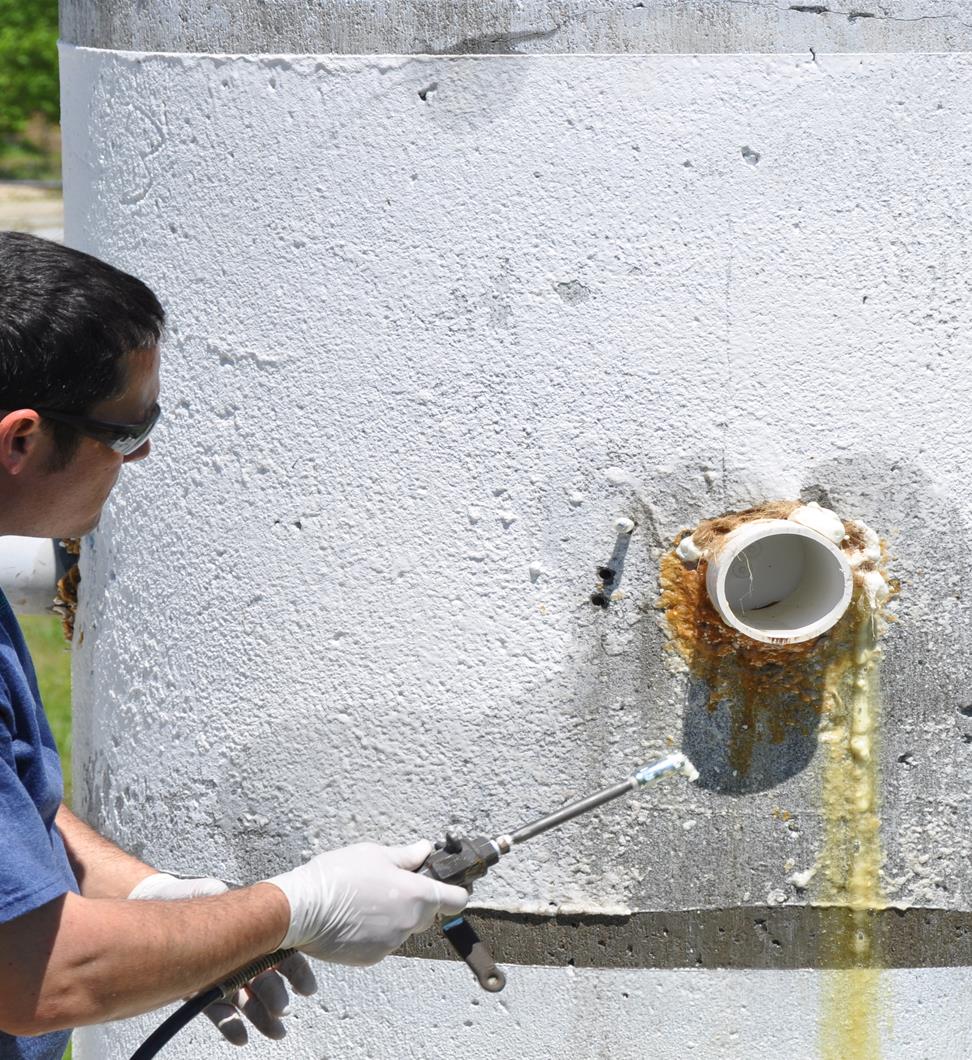
-
Looking for a contractor?
-
Certifications
-
Case Studies
- Contact
Case Studies- Leak Seal Pages
Sealing a manhole with chemical grout
Storm drainage infiltration, sinkholes, stopped with polyurethane chemical grout injection
Client: Military housing community, Richmond, Va.
Problem:
Sinkholes had developed around storm drainage manholes in grassy areas of a military housing subdivision in Richmond, Virginia. Besides being unsightly and a nuisance for lawn maintenance, these sinkholes posed a danger to kids playing in their neighborhood. In addition, housing officials worried that the erosion causing the sinkholes might stretch under nearby roads, which could cause sinkholes there as well. Another contractor previously attempted to fix the problem by injecting some sort of cementitious fill behind the manhole. That fix lasted less than a year.

Identifying the source: To pinpoint the sources of the problem, the contractor’s crew flooded the existing sinkholes and monitored the dry manhole to see where the infiltration entered. It was clear from accumulated sediment that some infiltration had occurred where the manhole barrel meets the bench; however, the flooding showed multiple additional infiltration points further up the structure. There were a few leaking cracks, but the connection of the inlet pipe from the surface catch basin and the connection of the storm main near the benchwere the sources of most leaks. These connections have brick aprons that have been surface sealed. There were no rubber gaskets (boots) present. Water leaked between the bricks through cracks in the surface seal.
Solution:
With on-site technical support from Prime Resins, the contractor injected Prime Flex 920 through the manhole wall to fill the voids and create a watertight curtain around the manhole. Prime Flex 920 is an expansive, hydrophobic polyurethane resin that reacts to form a rock-hard watertight mass. The grouting was done from inside the manhole because the repair locations were so deep, as much as 20 feet from the surface. Probe grouting from the surface outside the manhole can be done if the manhole is too narrow to work within.
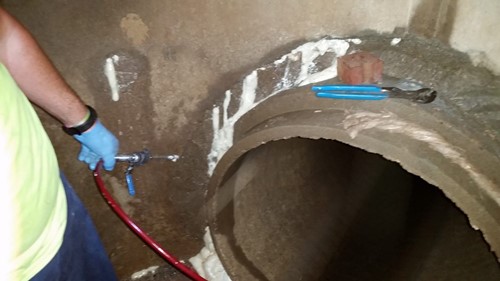
They installed four injection ports per pipe and injected each leak location starting at the lowest point and working up. This revealed a leaking injection hole from the previous repair attempt. Some 920 seeped out this hole and sealed it as well. The technicians repaired wide gaps around the main connection plus spalls and chips inside the collar using the activated oakum technique. They soaked oil-free oakum with Prime Flex 900 XLV and pushed it into the gaps where the reacted resin sealed the openings. The 900 XLV is a very low viscosity polyurethane and is hydrophilic, so it creates a tenacious bond with the wet concrete.
Outcome:
The crew tested their repair by flooding the sinkhole again. No water drained into the manhole: their repairs stopped the infiltration. Finally, they removed the ports and plugged the holes with hydraulic cement.
The contractor completed repairs with about eight gallons of material at less than half the cost of the failed repair.




